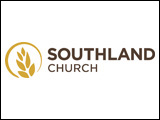The Saskatchewan Pork Development Board says the use benchmarking to compare hog production costs and returns can be valuable in helping pork producers improve their competitiveness.
InterPig is an international network of swine economists who collect and exchange standardized information on swine production costs and productivity in various countries for comparison.
In 2010 12 European Union countries including the major producers, Denmark, France, Germany and the Netherlands, provided information, Brazil submitted data, Canada provided figures and, while the U.S. did not participate, Iowa State University cost of production budgets were used to compare U.S. data.
Mark Ferguson, the Manager of Industry and Policy Analysis with the Saskatchewan Pork Development Board and a member of InterPig, says the goal is to standardize the information for easy comparison.
Basically you want to make sure that you’re comparing apples to apples, making sure that when you’re talking about carcasses that you’re using the same language and basically just standardizing the data so that you know that you’re reliably comparing them.
Benchmarking is important both in terms of understanding what your own costs are on the farm and then understanding what the competitiveness of your competitors both local and across the world is.
Basically it’s utilizing the data from your own operation and others around the world to understand your strengths and your weaknesses and to implement changes on your farm to hopefully become more competitive.
Ferguson notes in 2010 while pork production costs in Canada where higher than in Brazil or the United States they were lower than the European Union average however Canadian producers received the lowest price of all of the countries in the dataset.



